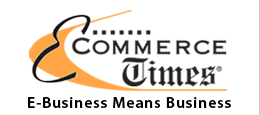SaaS Fault Lines
The Software-as-a-Service (SaaS) movement is rapidly becoming mainstream as organizations of all sizes adopt on-demand services to address various unmet needs or to replace their legacy applications.
The rising acceptance and adoption of SaaS represents a watershed opportunity for new and established independent software vendors (ISVs). But, THINKstrategies has discovered that it is also creating serious challenges for some SaaS companies who are letting escalating competition pressure them into compromising on the fundamental principles of the SaaS delivery model.
Today’s SaaS challenges do not involve the past concerns about the reliability, security or scalability of on-demand solutions. Despite occasional service disruptions, SaaS vendors have proven to be far more reliable than most internal IT departments. They have also been able to avoid security problems which continue to plague enterprises relying on traditional on-premise software. The scalability of on-demand applications has also been clearly demonstrated by a growing number of large-scale deployments.
Instead, the SaaS CEOs I’m talking to are feeling growing tension in two other areas—service pricing and support services.
The service pricing issue centers around the per seat pricing model and $50-100/month pricing range which have become a de facto standard for the SaaS market based on Salesforce.com’s success in the customer relationship management (CRM) and salesforce automation (SFA) segments. Even though other horizontal applications are often used differently than CRM and SFA applications, in too many cases SaaS solutions are being judged by how their pricing structures match Salesforce.com rather than by how their functional capabilities and cost compare with the legacy application which they might displace.
For instance, a CEO of an e-procurement vendor recently lamented to me that he has to work harder selling a six-figure annual subscription service than he did when he sold multi-million dollar legacy applications in his previous job. He has found that potential customers who already have Salesforce.com installed discount the fact that his SaaS solution is more comprehensive and can be implemented in a fraction of the time of a comparable legacy application.
(Compounding this challenge is the strict IT cost allocation schemes many enterprises have established, which penalize and discourage business units from adopting alternative software solutions, even if the alternatives can be more productive and/or less expensive.)
A related pricing issue emerging in the SaaS market is the common method of bundling technical support into the basic price of the service. By hiding the cost of support, many SaaS vendors have opened the door to unlimited tech support calls. They are betting that the ‘bell curve’ theory will hold true and the average number of calls per customer will stay within the estimated support costs budgeted into the price of delivering the SaaS solution. For SaaS companies with relatively simple applications, this bet can pay off. But, for SaaS companies offering more complex enterprise applications, the bundled support cost strategy is creating serious strains on their financial structures. Especially, in those cases in which SaaS vendors are permitting customers to customize their solutions.
A SaaS CEO recently told me that bundling issue is creating strains within his business. Like many SaaS companies which are aggressively trying to win new business, this SaaS vendor has bundled its support costs into its pricing structure. It has been good at defining when a client company should purchase additional professional services to deploy its on-demand solution. But, the company has also been willing to compromise the basic precept of the SaaS model and permitted new customers to customize their on-demand applications in order to win their business. This means the SaaS vendor can no longer update each and every customer in a systematic and cost-effective manner. Instead, the SaaS vendor must hold the hand of the outliers and absorb the added support costs.
Ironically, this CEO reported that many of the customers who insisted on customizing their SaaS solutions to meet their ‘unique’ business requirements are discovering that their requirements were not that unique after all, and they could have met their needs by better leveraging the meta-configuration options that were available from the SaaS company. As a result, they now admit that they’ve made it more difficult for them to fully benefit from the advantages of their SaaS solution and that they’ve caused their SaaS company more heartache than necessary.
Nonetheless, the burden falls on SaaS vendors to hold firm and resist the temptation to succumb to customer demands for special treatment in order to win their business. As Tod Loofbourrow, the CEO of Authoria, put it, “It is incumbent on the SaaS vendor to keep the customer within the guardrails”
In addition to being more disciplined about resisting customers’ desire to customize their SaaS solutions, SaaS vendors must also start focusing on selling the value-add of their solutions rather than competing on price. This means selling the superior value of their SaaS solution compared with similar legacy applications, rather than using a simple per unit pricing structure that isn’t relevant to their business.
I’m also advising SaaS companies to unbundle their support costs. I expect SaaS companies to return to the three-tier packaging and pricing model of silver, gold and platinum support levels that has been the norm in the IT industry for decades. I believe sophisticated enterprise decision-makers will accept this well-established service pricing and packaging model as a reasonable cost of ensuring the success of their SaaS subscription.
If SaaS companies offering complex, enterprise applications fail to demonstrate discipline in their response to customers’ demands for custom solutions, and do not adopt more rational pricing and support models, they won’t survive and the SaaS movement will be seriously impaired.
At the sametime, if customers continue to insist upon needlessly customizing their on-demand applications, they will kill the golden goose of SaaS.




